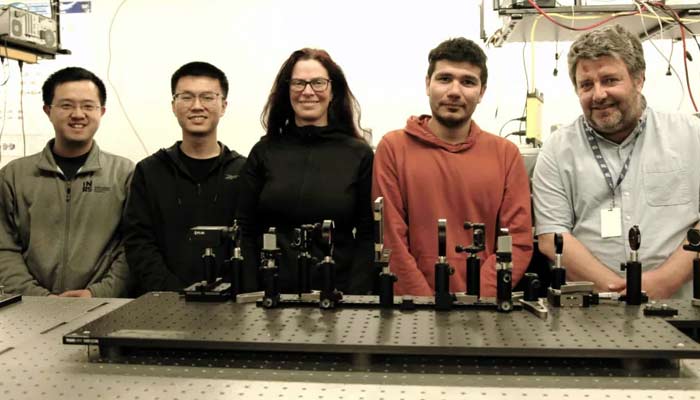Researchers develop breakthrough camera to revolutionise scientific photography
Ultrafast camera can study micro-events that come and go too quickly for today’s scientific sensors
March 27, 2024
Have you ever missed out on witnessing a great moment just because it happened to quickly? Well, scientists in Canada have developed a revolutionary ultrafast scientific camera that might change that.
They believe this camera can lead to breakthroughs in fields like shock wave mechanics and medicine as it can capture images at a rate of 156.3 terahertz (THz) per pixel or 156.3 trillion frames per second.
The swept-coded aperture real-time femtophotography (SCARF) is a research-grade camera which has successfully captured ultrafast events like semiconductor absorption and metal alloy demagnetisation, Engadget reported.

The team is working with two companies, Axis Photonique and Few-Cycle, to develop commercial versions of SCARF which they have already described as "low-cost with low power consumption and high measurement quality compared to existing techniques."
It can study micro-events that come and go too quickly for today’s scientific sensors.
Professor Jinyang Liang of Canada’s Institut national de la recherche scientifique (INRS), led a research team that published a study in the journal Nature.
The study, which builds on a previous study, focuses on ultrafast cameras.
Typically, these systems use a sequential approach, capturing frames one at a time and observing objects in motion.
However, this approach has limitations, as Liang explained: "For example, phenomena such as femtosecond laser ablation, shock-wave interaction with living cells, and optical chaos cannot be studied this way."
"SCARF overcomes these challenges," INRS communication officer Julie Robert wrote in a statement. "Its imaging modality enables ultrafast sweeping of a static coded aperture while not shearing the ultrafast phenomenon."
She further revealed that the camera uses computational imaging to capture spatial information by allowing light to enter its sensor at slightly different times, allowing it to capture "chirped" laser pulses at up to 156.3 trillion times per second.
The paper described that the camera pulled this off by "using off-the-shelf and passive optical components".











